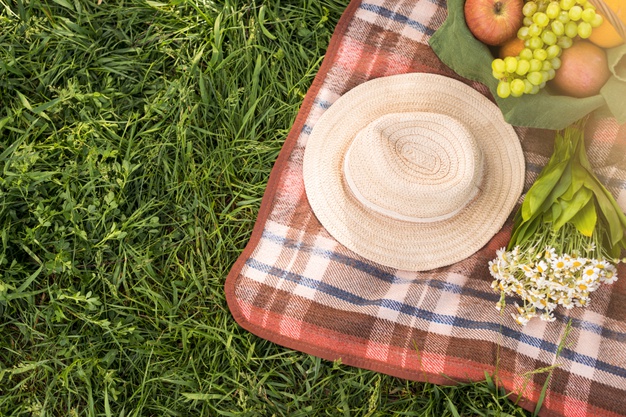
June 20 marks the official start of summer, which means warm, sunny days perfect for picnics and barbecues. Unfortunately, this time of year is also a favorite for foodborne bacteria that cause foodborne illness (also known as food poisoning), which multiply faster at temperatures between 40°F and 140°F. Follow the tips below to keep your food safe when eating outdoors.
Before your picnic
- Defrost meat, poultry, and seafood in the refrigerator or by submerging sealed packages in cold water. You can also microwave-defrost, but only if the food will be grilled immediately afterward.
- Never reuse marinade that touched raw foods unless you boil it first or set some of the marinade aside before marinating food to use for sauce later.
- Marinate foods in the fridge, not the countertop.
- Wash all produce before eating, even if you plan to peel it. The knife you use to peel it can carry bacteria into the part you eat. Fruits and vegetables that are pre-cut or peeled should be refrigerated or kept on ice to maintain quality and safety.
- If your picnic site doesn’t offer clean water access, bring water and soap or pack moist disposable towelettes for cleaning surfaces and hands.
- Don’t forget to pack a food thermometer!
Packing coolers
- Place food from the refrigerator directly into an insulated cooler immediately before leaving home.
- Use ice or ice packs to keep your cooler at 40 °F or below.
- Pack raw meat, poultry, and seafood in a separate cooler, or wrap it securely and store at the bottom of the cooler where the juices can’t drip onto other foods. Place beverages in a separate cooler; this will offer easy drink access while keeping perishable food coolers closed.
- Avoid loading coolers in the trunk of the car, as it can collect heat. Once at the picnic site, keep food in coolers until serving time (out of direct sun) and avoid opening the lids often.
Grilling
- Have clean utensils and platters available. Cook meat, poultry, and seafood to the right temperatures ─ use a food thermometer to be sure (see Safe Minimum Cooking Temperatures Chart). Keep cooked meats hot at 140 °F or warmer until serving time — set them to the side of the grill rack to keep them hot.
- When removing foods from the grill, place them on a clean platter. Never use the same platter and utensils for cooked food that you used for raw meat, poultry, or seafood.
Time and temperature
Don’t let hot or cold food sit in the “Danger Zone” (between 40 °F and 140 °F) for more than 2 hours – or 1 hour if the outdoor temperature is above 90 °F. If they do, throw them away.
Learn more about how you can keep your food safe while eating outdoors:
https://www.fda.gov/food/buy-store-serve-safe-food/handling-food-safely-while-eating-outdoors
https://www.fda.gov/consumers/consumer-updates/barbecue-basics-tips-prevent-foodborne-illness


Chattooga Sports
Malone and Team USA Gymnasts make appearance on Today Show

Bulloch Public Safety
04/16/2024 Booking Report for Bulloch County

Chattooga Sports
Gamecocks Rally Past Arkansas State to Win Bowling National Title

Crime & Safety
Crisp County Man Arrested for Arson

Bulloch Public Safety
03/25/2024 Booking Report for Bulloch County

Bulloch Public Safety
04/09/2024 Booking Report for Bulloch County

Bulloch Public Safety
04/01/2024 Booking Report for Bulloch County

Bulloch Public Safety
03/18/2024 Booking Report for Bulloch County

Bulloch Public Safety
04/08/2024 Booking Report for Bulloch County





